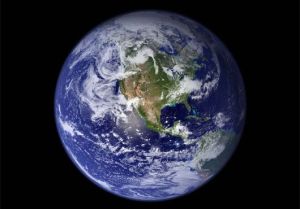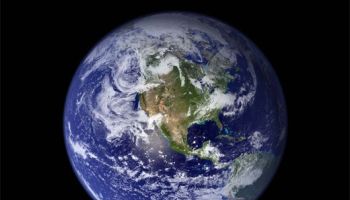
Earth Day is a name used for two different observances, both held annually during spring in the northern hemisphere, and autumn in the southern hemisphere. These are intended to inspire awareness of and appreciation for the Earth’s environment. The United Nations celebrates Earth Day, which was founded by John McConnell in 1969, each year on the March equinox, while a global observance originated by Gaylord Nelson as an environmental teach-in, and since January 1970 also called Earth Day, is celebrated in many countries each year on April 22, including the U.S.
A few simple changes over a year can make every day Earth Day:
- If you recycle your newspaper (what’s that?) every week, you’ll keep four trees alive per year and increase the earth’s oxygen
- If you cut one 20-mile car trip each week by completing errands at once rather than making separate trips, you’ll prevent more than 1,200 pounds of greenhouse gas from being emitted and adding to global warming.
- If you recycle a six-pack of aluminum cans every week, you’ll save enough energy to power a television for 936 hours.
- If you cut 5 minutes from your daily shower, you’ll save up to 9,000 gallons of water
Source: Woman’s Day
Here are more tips from Good Housekeeping to help you live greener, on Earth Day and all year round:
- For every 10 minutes you shower, you may be using up to 25 gallons of water. If every GH reader used a WaterSense-rated showerhead (epa.gov/watersense), 120 million gallons could be saved in just one day — that’s 182 Olympic-size pools — and $88 million a year.
- Windows and doors can be major causes of heat loss, with faulty windows adding 10 to 25 percent to your heating bill. Open blinds during the day to let sun in. At dusk, close them to trap heat.
- CFL bulbs work best in rooms where they’ll be left on for at least 15 minutes. Frequent on-and-off (say, in a closet or pantry) can shorten bulb life, so the replacement cost can outweigh energy savings. — Todd J. Kent, GHRI senior test engineer
- Configure your office printer or copy machine so it prints on both sides of the page.
- Pay bills online, or set up automatic check paying from your bank account. No envelopes, no postage — and no late fees, if you’re on an automatic plan.
- Driving 10 mph above 60 is like adding nearly 50 cents to the price of a gallon of gas, since higher speed equals more guzzling.
- Choose concentrated or ultra-cleaning products, which use 50 to 60 percent less packaging than traditional formulas while cleaning just as thoroughly.
- Plant trees around the house strategically (on the south and west sides; shading the air-conditioning unit, if possible) to save up to about $250 a year on cooling and heating.
- Switch to a front-loading washer from a top loader. In a recent GHRI test of front loaders, they used less than half the water traditionally used by a top loader for a full load.
- You probably know that compact fluorescent bulbs are more energy efficient — in fact, ones that are Energy Star qualified use about 75 percent less electricity and last up to 10 times longer than traditional incandescents.
- True or false: Heat is your home’s biggest energy hog. True. Heat typically accounts for 31 percent of the costs, and AC uses 12 percent. Contact your local utility company to ask about a free energy audit, which will locate drafts.
- Don’t flush your cash — toilets are the top source of indoor water use for a home. In the 1992 law, they were mandated to a max of 1.6 gallons per flush. Older ones can use from 3.5 to 7.0 GPF — real water wasters! Early low-flow toilets often weren’t efficient; some required two or more flushes, defeating the purpose.
- Hang drapes to help block drafts from where the window meets the frame.
- Spritz spray cleaner on cloth, not surfaces. You’ll use less.
- Running a full dishwasher uses half the water and energy — or less — of washing the same dishes by hand. Another water saver: Don’t rinse before loading. — Carolyn Forte, home appliances & cleaning products director
- True or false: Compact fluorescent light bulbs (CFLs) are the most energy-efficient option. False. LEDs are. Now available as direct replacement bulbs, they can use about half the energy that CFLs do, and last about four times as long — in some cases, 25 years!
- Water your yard wisely Be sure sprinklers are placed so you’re not also watering pavement. It’s best to water early in the morning to minimize evaporation and allow plants to absorb moisture before the day heats up
- Get off junk-mail lists Register with the Direct Marketing Association’s DMA choice mail preference service (dmachoice.org), and you’ll see a significant reduction in mail after three months.
- June 1979: THEN — Combine your separate errands — bank, grocery, drugstore, cleaner’s, etc. — into one trip and form carpools with others to get to and from. NOW — True today — whether it’s to cut fuel costs or to shrink your carbon footprint.
- Bring home superhero plants. Certain easy-care greens (English ivy, mums, and peace lilies) naturally help remove indoor air pollutants like formaldehyde and benzene.
- Until your utility company installs Smart Meters, consider a home energy monitor (starting at $100), which shows real-time electricity use and cost in a similar way. With relatively small habit changes, you can save up to 20 percent.
Source: Good Housekeeping
Photo Credit: NewsOne
“LIKE” my Facebook page, “The Angel of Inspiration” at www.facebook.com/theangelofinspiration.com and follow me on Twitter at www.twitter.com/cecemcghee. Also, join my text club by texting the keyword: CeCe to 37890 to receive your Daily Faith Lift™.













